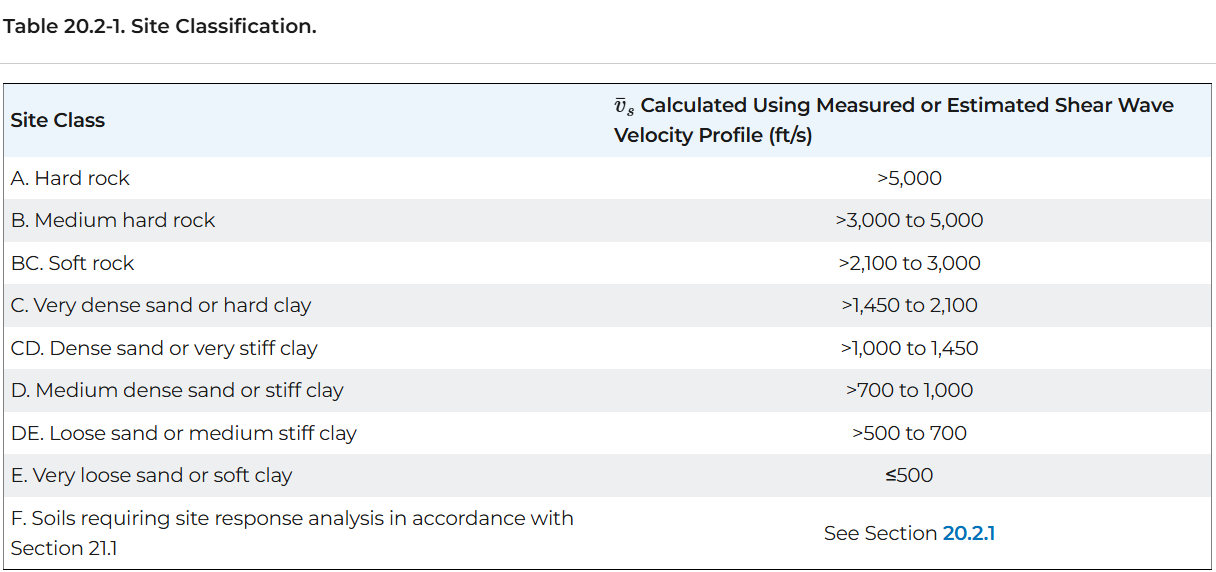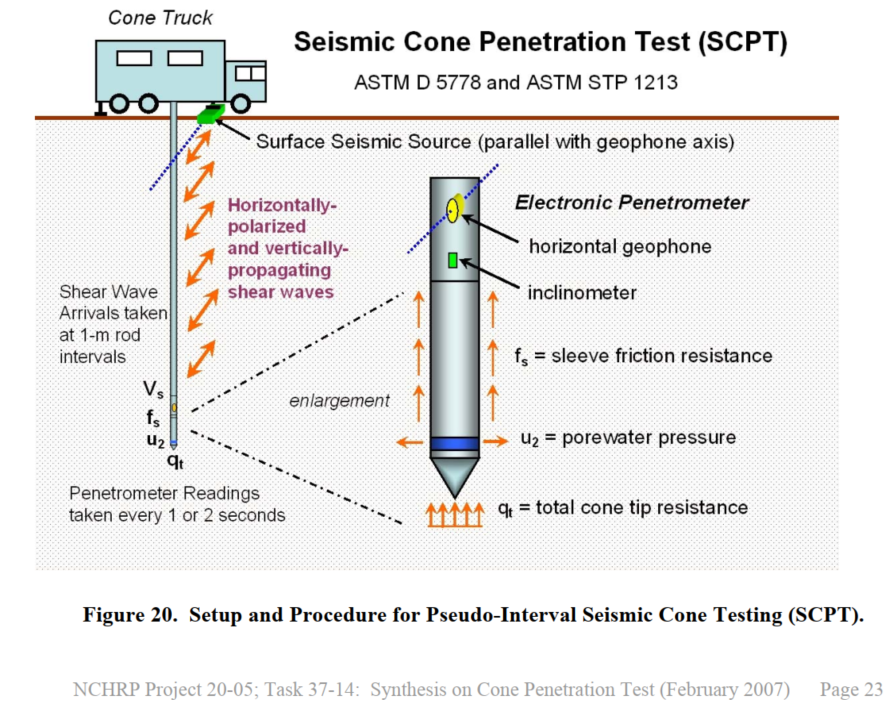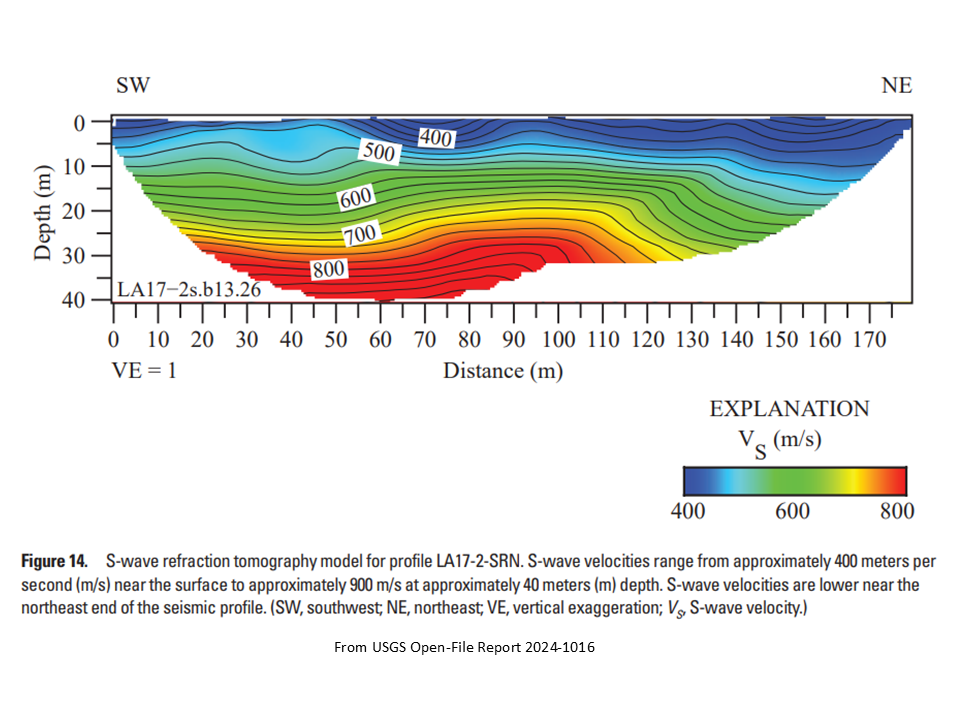Ground Truths - Seismic Site Class
Precision Site Classification with In-House Shear Wave Velocity Profiling
At InnovoGeo Engineering, we believe that seismic site classification should be based on measured data, not conservative assumptions. That’s why we offer in-house shear wave velocity (Vs) profiling using both invasive and non-invasive geophysical methods. Our combined capabilities, including Seismic Cone Penetration Testing (SCPTu) and surface-wave-based Vs measurement techniques, enable us to classify sites with greater accuracy, efficiency, and compliance with the 2021 Virginia Construction Code (VCC), 2024 International Building Code (IBC), ASCE 7-22, 2024 AASHTO LRFD Bridge Design Specifications 10th Edition, and 2023 AASHTO Guide Specifications For LRFD Seismic Bridge Design 3rd Edition.
Vs₃₀ is the average shear wave velocity in the upper 30 meters of the subsurface and is a key parameter used to classify seismic site conditions for building code compliance and structural design. A summary of seismic site classes from ASCE 7-22 is provided in Table 20.2-1 below, which aligns with 2023/2024 AASHTO. With seismic design criteria becoming more stringent, relying solely on Standard Penetration Test (SPT) data and empirical correlations can lead to overly conservative classifications, resulting in unnecessary construction costs, materials use, and design restrictions. InnovoGeo’s approach helps avoid these pitfalls by providing direct, site-specific Vs₃₀ data that is recognized and encouraged by modern seismic codes.
A Clear Code Preference for Measured Vs
Under IBC 2024 Section 1613.2, ASCE 7-22 Chapter 20, and 2024 AASHTO Section 3.10.3.1, and 2024 AASHTO Section 3.4.2.1, seismic site class determination can be made using:
Estimated Vs₃₀ from empirical relationships (e.g., SPT N-values, plasticity, and soil type), or
Measured Vs₃₀ from field tests such as SCPT, MASW (Multi-Channel Analysis of Surface Waves), or microtremor HVSR methods.
Measured Vs values are explicitly preferred, especially when empirical methods yield uncertain, variable, or overly conservative results.
The New Penalty for Using SPT
Both the 2024 IBC and 2024 AASHTO now include an explicit penalty for relying on SPT data to estimate Vs₃₀. When using SPT correlations, the adjusted values are deliberately reduced by factors of up to 30%, making it harder for a site to qualify as Site Class C, even if direct shear wave testing would justify it. For the 2024 IBC, Site Classes C and higher can now only be determined based on Measured Vs₃₀ values. For the 2023 AASHTO, Site Class B and higher can only be assigned based on Measured Vs₃₀ values.
The result? Higher seismic base shear demands, more costly structural systems, and unnecessary design constraints.
By contrast, direct Vs₃₀ measurements from SCPTu or surface-wave methods are preferred under ASCE 7-22 and 2024 AASHTO and avoid this penalty entirely.
InnovoGeo’s In-House Advantages
Depending on site access and expected subsurface conditions, we can select from one or more Vs measurement methods to provide the greatest value:
SCPTu – High-resolution Vs profiles to 30+ meters, plus cone tip resistance, skin friction, and pore pressure measurements.
Surface-wave profiling – Passive and active-source geophysical methods (e.g., MASW, HVSR) for fast, non-invasive Vs measurements across challenging or constrained sites, or where SCPTu methods may not be feasible due to shallow refusal.
Together, these approaches provide redundant, defensible, and cost-saving Vs₃₀ data, reducing conservatism and supporting better seismic design decisions.
Smarter Classification. Stronger Value.
In today’s regulatory and economic climate, conservative assumptions carry a real cost. InnovoGeo’s direct-measured Vs profiling methods help unlock more favorable seismic classifications, reduce structural system overdesign, and keep your project on time and on budget.
Contact us to learn how we can apply high-resolution Vs₃₀ data to your next project.
References
Chan, J. H., Catchings, R. D., Goldman, M. R., Criley, C. J., & Sickler, R. R. (2024). Evaluation of 2-D shear-wave velocity models and VS30at six strong-motion recording stations in southern California using multichannel analysis of surface waves and refraction tomography (No. 2024-1016). US Geological Survey.
National Academies of Sciences, Engineering, and Medicine. (2007). Cone Penetration Testing State-of-Practice. NCHRP Project 20-05, Task 37-14.


